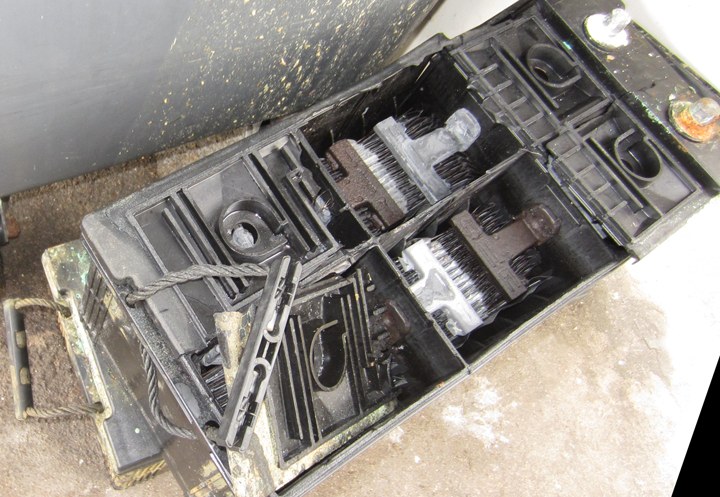
Exploding Lead-Acid Batteries

©2013 Latitude 38 Media, LLC
Lead acid batteries are used as starting and house batteries on many boats — and cars — and usually they work very well. However, on rare occasions they explode when being charged. And they can explode with such force that they blow the top right off the battery case. Sometimes such explosions can result in fires, and fires are never good on a boat.
Hydrogen and oxygen gases, both of which are highly flammable and explosive, are produced when batteries are charged. Many lead acid explosions are believed to occur when the electrolyte level gets below the level of the plates, which would allow for hydrogen/oxygen to accumulate. When the battery is engaged, it may create a spark that ignites the accumulated gases.
Two things that can be done to reduce the chance of a lead acid battery explosion are: 1) make sure there is plenty of ventilation around the battery to keep hydrogen and oxygen from accumulating, and 2) make sure the electrolyte is kept at the proper level.
Ever had a problem with an exploding lead-acid battery? If so, we’d like to hear about it.
